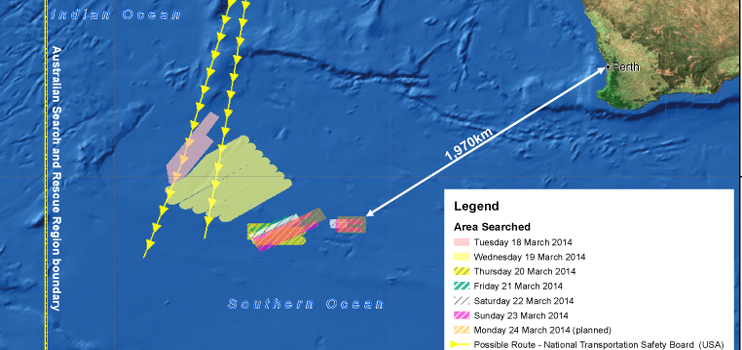Debris from MH370 is expected to wash up along the Western Australian coast over the next few months as search crews race against the impending winter weather to locate the Boeing 777.
The herculean task of locating MH370 will be the most complex international effort in aviation history and it may be years before the main body of wreckage is located.
It took almost two years to find Air France Flight 447 and that was in calmer mid Atlantic waters, after debris was found just six days after the crash in 2009.
According to the lead investigator of the AF447 crash Alain Bouillard, searches face a “colossal task” that is “far, far harder”.
Mr Bouillard London’s Telegraph the location of MH370 is “one of the most hostile environments in the world”.
However, searchers are expected to learn from the lessons of the AF447 recovery, observers said.
In that recovery a team led by the Woods Hole Oceanographic Institution operating full ocean depth autonomous underwater vehicles used sidescan sonar, to locate the main debris field at a depth of 4000m. More than 104 bodies were recovered.
Without doubt the biggest challenge in locating and recovering MH370 will be the sea condition with winter swells as high as 25m (75ft).
The location of the MH370 is at the convergence of three currents – the South Indian Ocean Current, which becomes the West Australian Current, the Leeuwin current and the Antarctica Circumpolar Current.
Those underlying currents work below the sea swells which move in a broad easterly and north-easterly direction depending upon the frontal activity.
Oceanographer Dr Erik Van Sebille told Channel 7’s Sunrise the currents are extremely strong at up to 2cm a second and would get worse.
“The current varies every day and has vortices and debris can move 100km a day [in all directions].”
With the new satellite data from Inmarsat, along with increasing amounts of drift data searchers will try to zero in on MH370’s initial impact area.
An Australian warship is expected to be tasked with deploying US locator equipment. Yesterday a 5m long 800kg Bluefin drone and a Towed Pinger Locater arrived in Perth aboard a special G550 jet from the US.
MH370’s black boxes are key to solving the mystery of why the plane veered so far off course. In theory, the black boxes containing flight data and cockpit voice recordings will continue emitting tracking signals for about another two weeks, with an average audible range of 2 to 3km.
“Picking up a signal from the beacon seems an outside chance,” a member of the team that hunted the black boxes from Air France flight AF447 said.
In that accident the signals were not heard at all as one transmitter had failed and the other had fallen off on impact and was never found.
The sea bed where MH370 is thought to be is up to 5km deep. But the cockpit voice recorder only tapes the last between 30 minutes and two hours – depending upon the model – of the pilot’s conversation and investigators will never hear what happened around the time the plane first changed course.
























